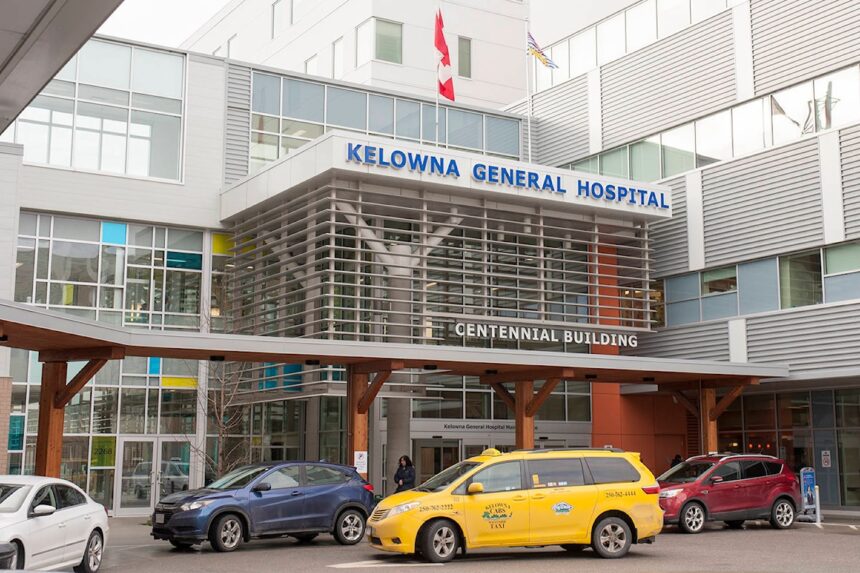I arrived just after six at the Okanagan College lecture hall, notebook in hand, to find the space already buzzing with frustration. Doctors in scrubs who’d come straight from shifts sat alongside elderly couples and young mothers, all united by their experiences navigating Kelowna General Hospital’s increasingly strained corridors.
“My father waited 37 hours in emergency before getting a bed,” a woman in her forties told me, clutching a coffee cup with both hands. “The nurses were amazing, but they looked exhausted. There just weren’t enough of them.”
Her story wasn’t unique in this crowd of nearly 200 residents who had gathered after Kelowna MLAs Renee Merrifield and Norm Letnick publicly called on Health Minister Adrian Dix to attend a town hall meeting to address mounting concerns about conditions at Kelowna General Hospital.
The invitation comes amid growing public anxiety about hospital capacity, staffing shortages, and what many healthcare workers describe as unsustainable working conditions. Last month, nurses at KGH reported regularly caring for patients in hallways and storage rooms converted to makeshift treatment areas.
“We’ve heard too many stories from constituents about delayed surgeries, emergency room overcrowding, and healthcare workers burning out,” Merrifield told the crowd. “The minister needs to hear these stories directly and explain what concrete steps are being taken to address this crisis.”
Dr. Toye Oyelese, an obstetrician who’s practiced in Kelowna for 15 years, described the situation in stark terms. “What we’re seeing now isn’t just a seasonal surge. It’s a systemic problem that’s been building for years. We have excellent care providers working in increasingly impossible conditions.”
According to data from the BC Nurses’ Union, vacancy rates for nursing positions at Interior Health facilities hover around 26 percent, significantly higher than the provincial average. A recent report from the Canadian Institute for Health Information shows British Columbia has one of the lowest per-capita hospital bed ratios in the developed world at 2.1 acute care beds per 1,000 residents, compared to the OECD average of 4.6.
The pressure is particularly acute in rapidly growing regions like Kelowna, where population growth has outpaced healthcare infrastructure expansion. Census data shows the Central Okanagan’s population increased by 14 percent between 2016 and 2021, making it one of Canada’s fastest-growing metropolitan areas.
At the microphone, a paramedic described regularly waiting hours with patients on stretchers before hospital staff could take over care. “We’re seeing offload delays of six to eight hours sometimes. That means our ambulances are effectively out of service while we wait.”
As I walked through the crowd during a break, I met Janet Rowe, a retired healthcare administrator who’s now caring for her husband with Parkinson’s disease. “When he fell last month, we waited nine hours in emergency. I watched as staff tried to monitor patients in hallways with no privacy, no dignity. This isn’t the care British Columbians deserve.”
The Ministry of Health has acknowledged challenges at KGH but points to several initiatives intended to address them. Last year, the province announced $150 million for expanding emergency department capacity across B.C., with $12 million earmarked for Interior Health facilities. Additionally, the ministry cites ongoing efforts to recruit healthcare professionals, including internationally trained nurses and doctors.
In a statement responding to the MLAs’ invitation, Minister Dix’s office noted that he has visited Kelowna General Hospital three times in the past year and meets regularly with Interior Health leadership. The statement emphasized investments in healthcare infrastructure but did not directly address whether Dix would attend the proposed town hall.
Dr. Sarah Evans, a family physician who helped organize the meeting, expressed frustration with what she sees as disconnect between government messaging and frontline realities.
“We keep hearing about investments and plans, but our experience on the ground isn’t changing. In fact, it’s getting worse,” she said. “We need the minister to sit with the community, hear these stories directly, and explain exactly how these investments will translate to better care for patients and sustainable working conditions for staff.”
One recurring theme throughout the evening was the need for transparency around hospital data. Several healthcare workers noted that occupancy rates, emergency department wait times, and staffing levels aren’t readily available to the public, making it difficult to hold decision-makers accountable.
Interior Health’s most recent service plan acknowledged “significant pressures” on acute care facilities and outlined strategies including expanding community care options to reduce hospital admissions. The health authority also pointed to ongoing challenges recruiting specialists in smaller communities.
As the meeting wound down, Letnick urged attendees to share their stories on social media using specific hashtags to increase visibility. “The minister needs to understand this isn’t political—it’s personal for thousands of families in our community.”
Walking back to my car under a sky threatening rain, I spoke with a nurse who’d attended after finishing her shift. She declined to give her name, citing concerns about speaking publicly.
“I love my job and my patients,” she said quietly. “But some days I go home feeling like I’ve failed them because there aren’t enough of us to provide the care they deserve. We need more than promises and press releases. We need real solutions before more of us leave the profession altogether.”
Whether Minister Dix accepts the invitation remains to be seen. But what’s clear is that the conversation about Kelowna’s healthcare challenges has moved beyond hospital boardrooms and political offices into a community increasingly determined to be heard.






